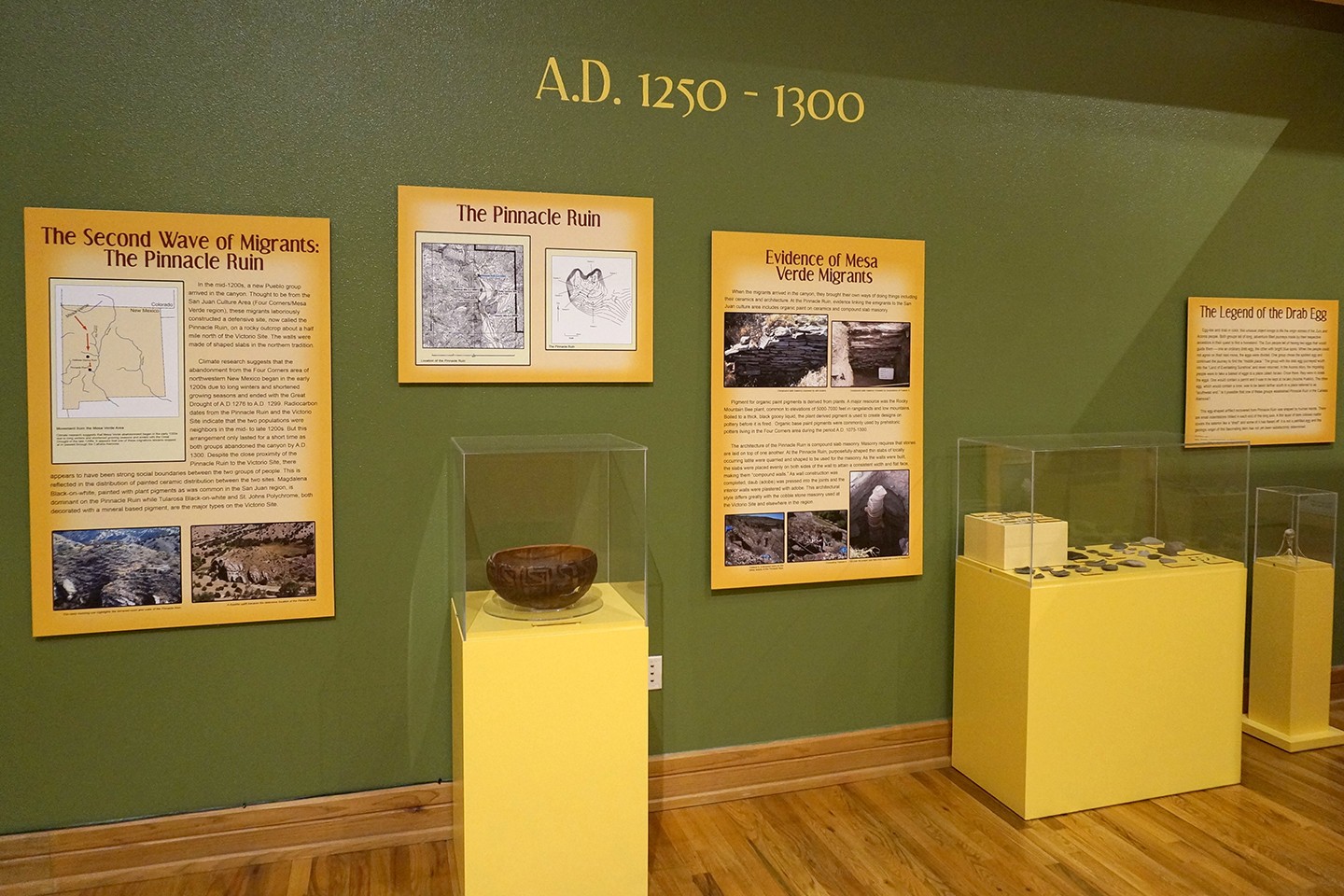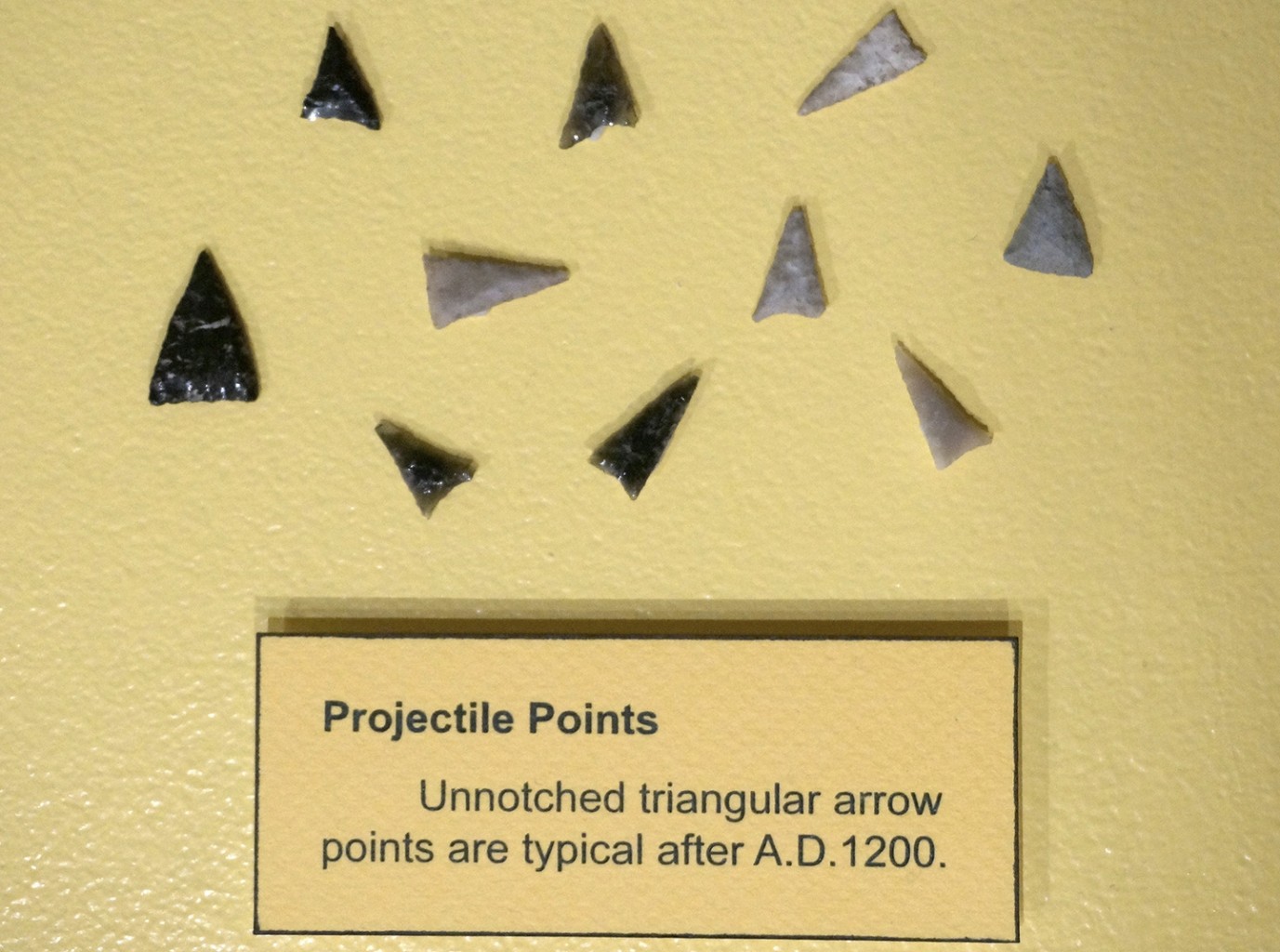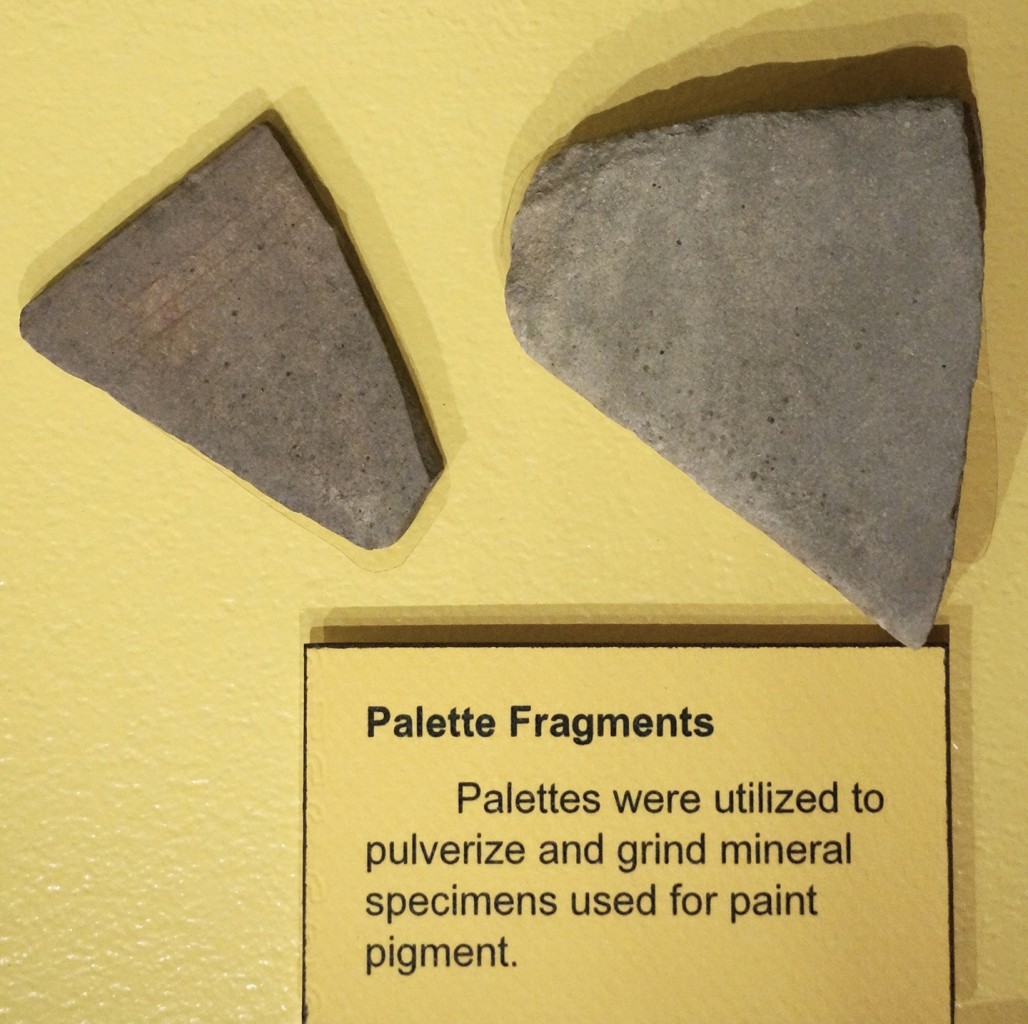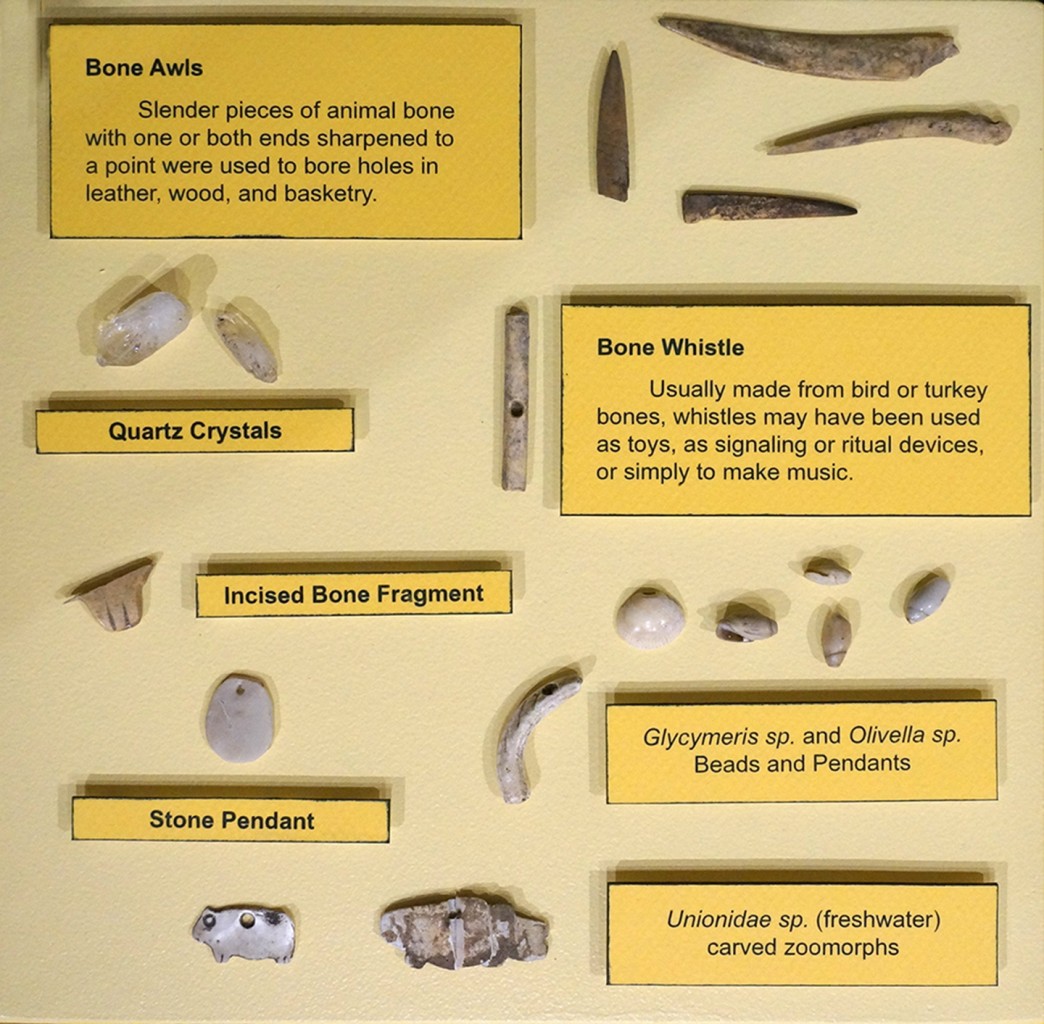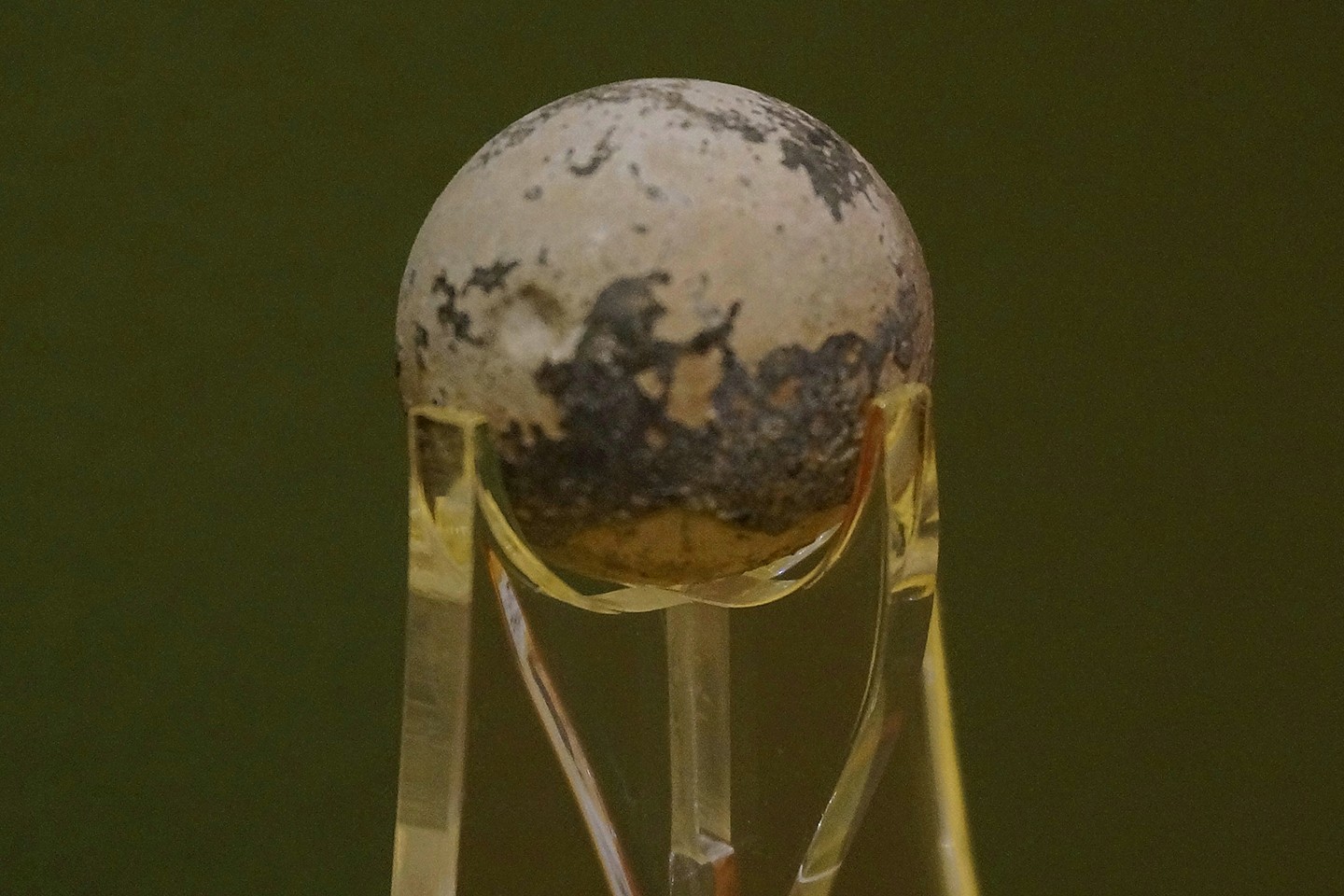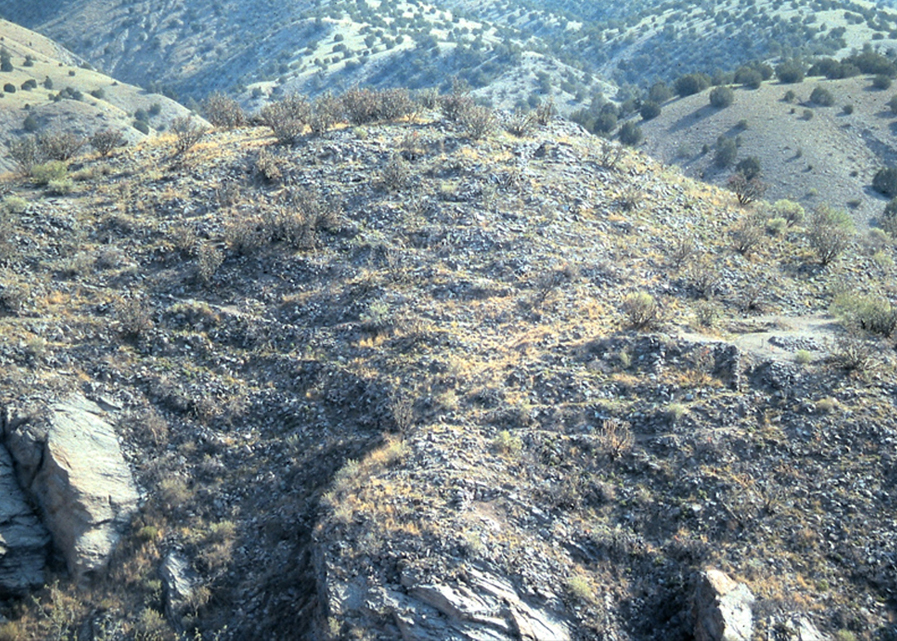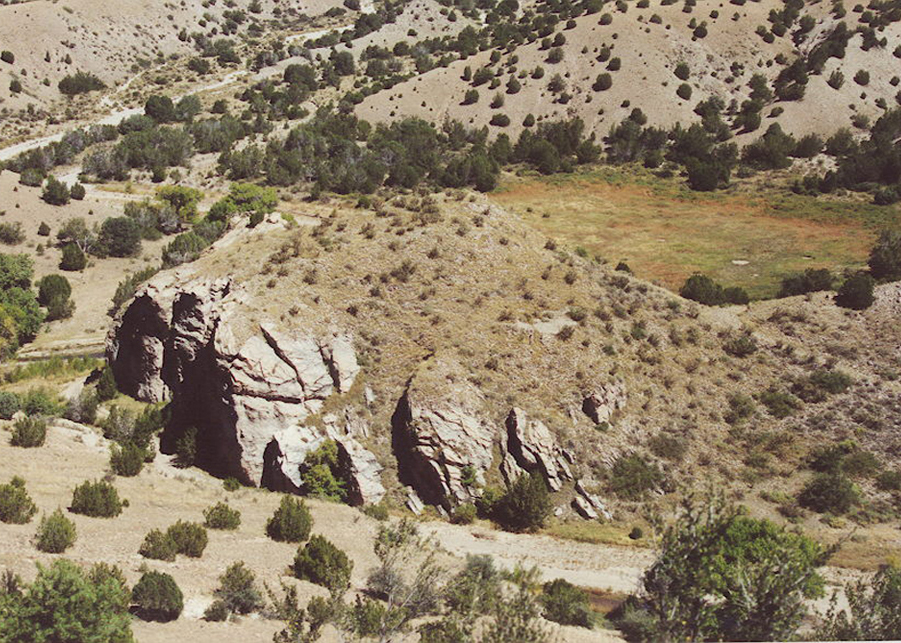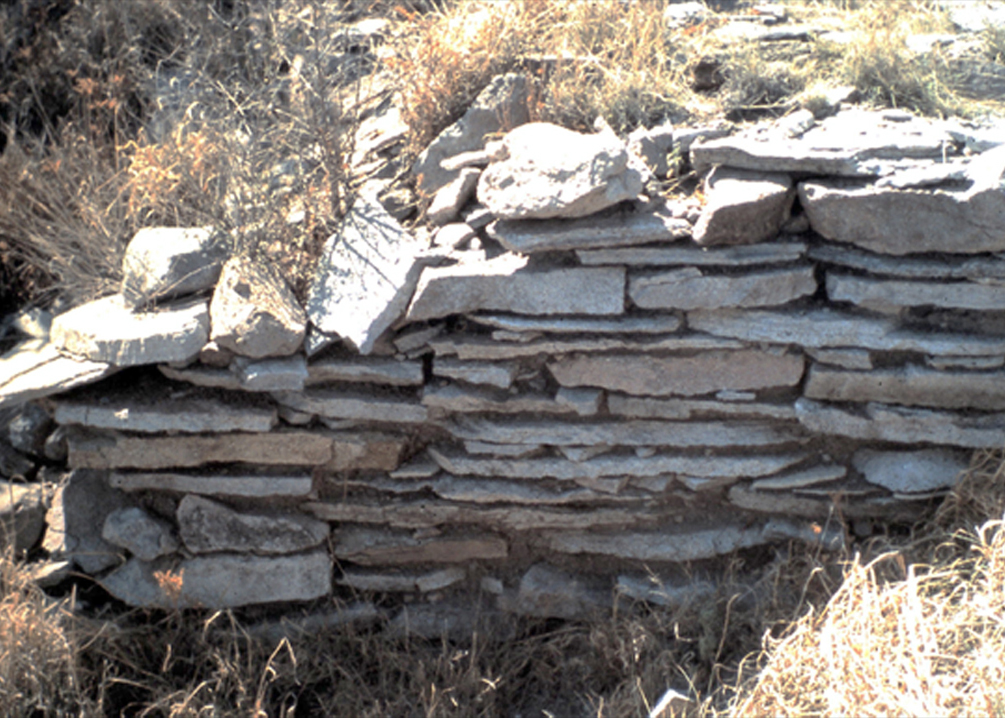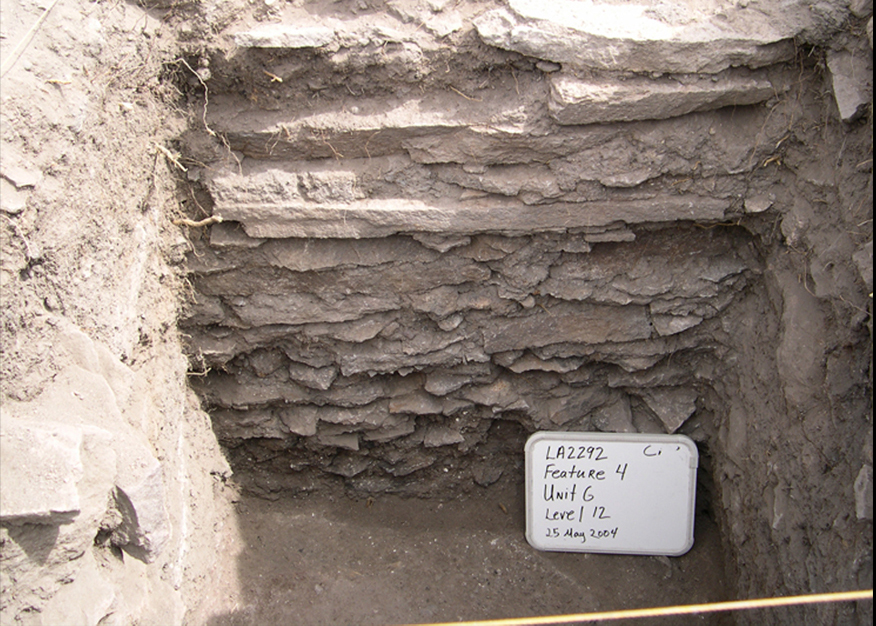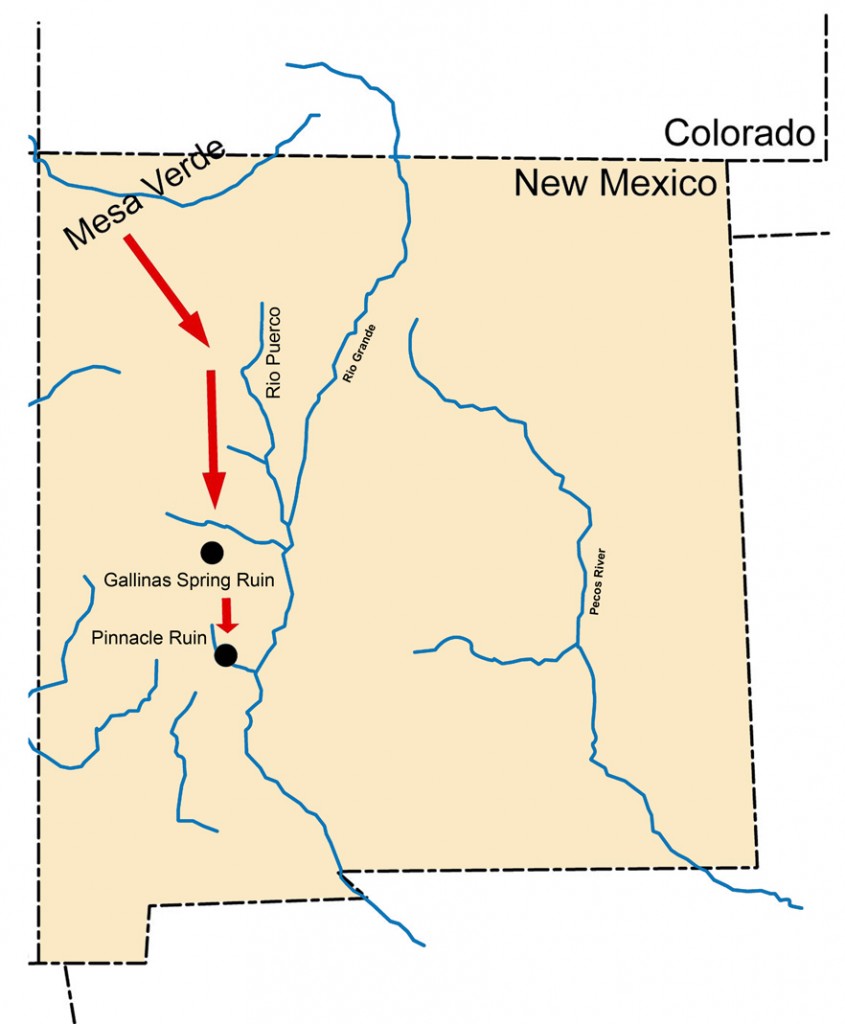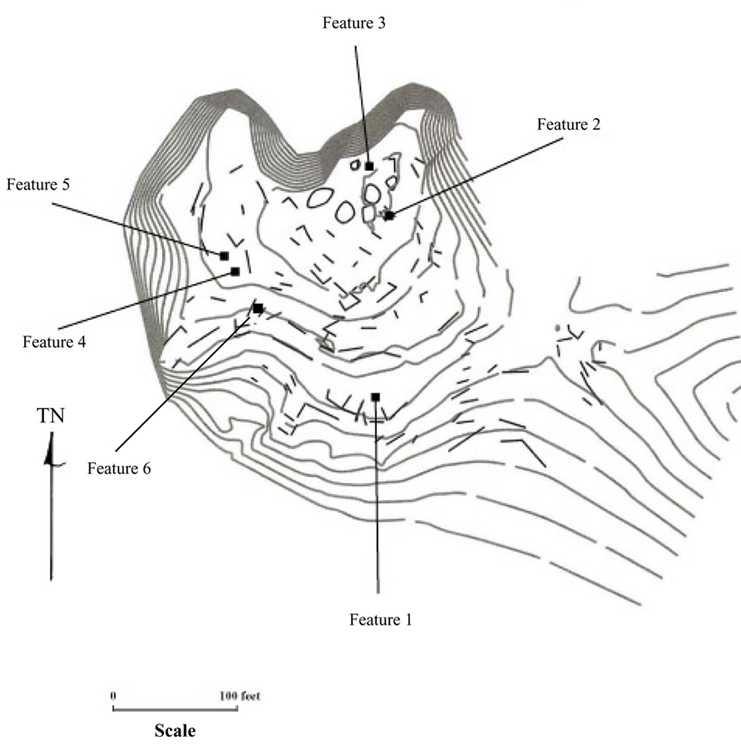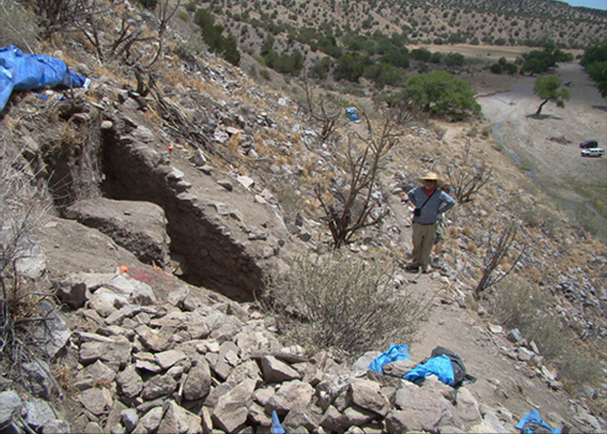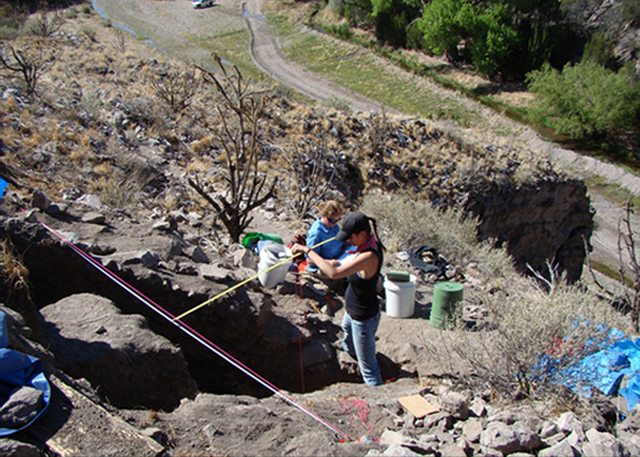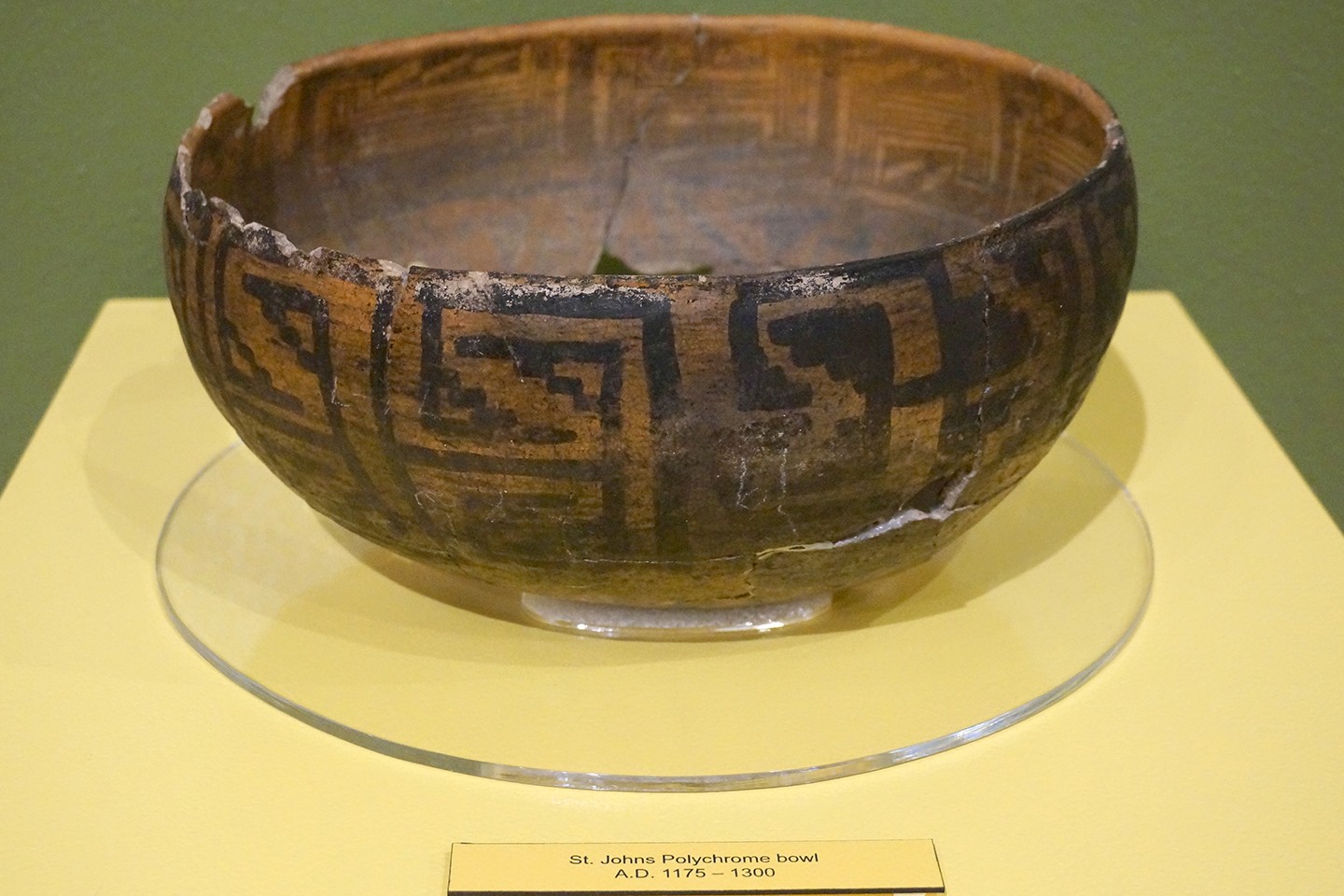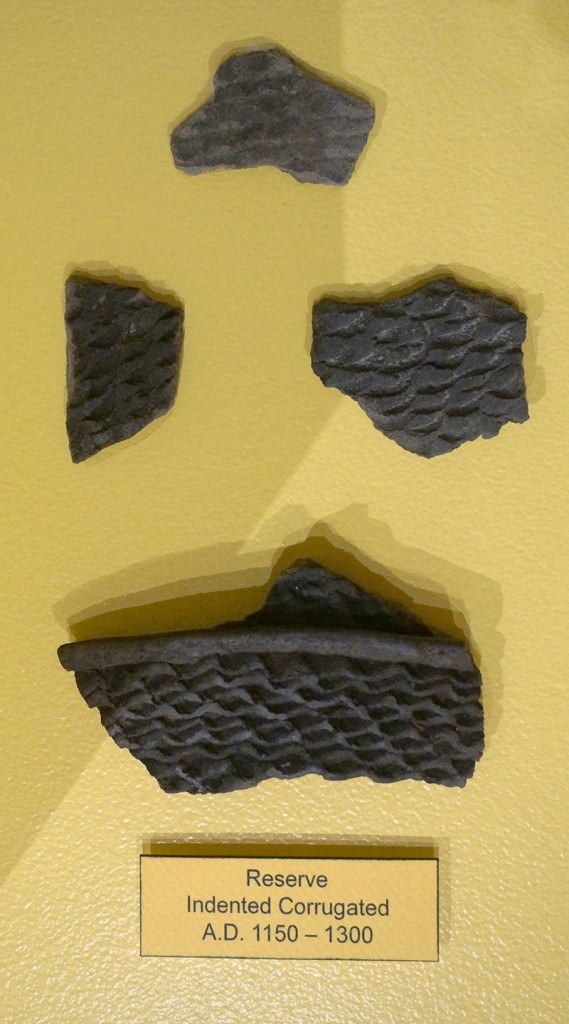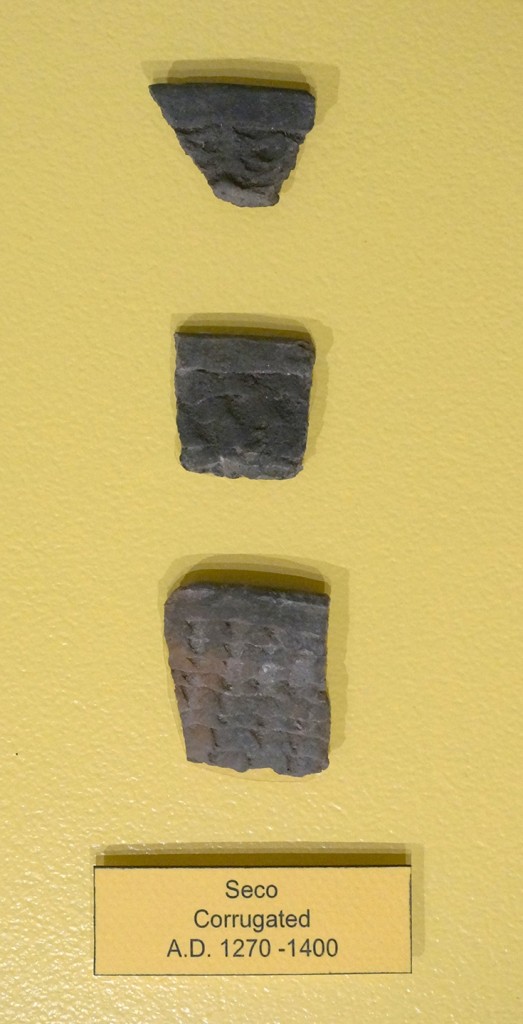The Second Wave of Migrants: The Pinnacle Ruin
In the mid-1200s, a new Pueblo group arrived in the canyon. Thought to be from the San Juan Culture Area (Four Corners/Mesa Verde region), these migrants laboriously constructed a defensive site, now called the Pinnacle Ruin, on a rocky outcrop about a half mile north of the Victorio Site. The walls were made of shaped slabs in the northern tradition.
Climate research suggests that the abandonment from the Four Corners area of northwestern New Mexico began in the early 1200s due to long winters and shortened growing seasons and ended with the Great Drought of A.D. 1276 to A.D. 1299. Radiocarbon dates from the Pinnacle Ruin and the Victorio Site indicate that the two populations were neighbors in the mid- to late 1200s. But this arrangement only lasted for a short time as both groups abandoned the canyon by A.D. 1300. Despite the close proximity of the Pinnacle Ruin to the Victorio Site, there appears to have been strong social boundaries between the two groups of people. This is reflected in the distribution of painted ceramic distribution between the two sites. Magdalena Black-on-white, painted with plant pigments as was common in the San Juan region, is dominant on the Pinnacle Ruin while Tularosa Black-on-white and St. Johns Polychrome, both decorated with a mineral based pigment, are the major types on the Victorio Site.
The sites discussed in this website are on private land and there is no public access.
Movement from the Mesa Verde Area
Climate research suggests that Mesa Verde abandonment began in the early 1200s due to long winters and shortened growing seasons and ended with the Great Drought in the late 1200s. It appears that one of these migrations streams stopped at or passed through the Cañada Alamosa
The Pinnacle Ruin.
Evidence of Mesa Verde Migrants
When the migrants arrived in the canyon, they brought their own ways of doing things including their ceramics and architecture. At the Pinnacle Ruin, evidence linking the emigrants to the San Juan culture area includes organic paint on ceramics and compound slab masonry.
Pigment for organic paint pigments is derived from plants. A major resource was the Rocky Mountain Bee plant, common to elevations of 5000-7000 feet in rangelands and low mountains. Boiled to a thick, black gooey liquid, the plant derived pigment is used to create designs on pottery before it is fired. Organic base paint pigments were commonly used by prehistoric potters living in the Four Corners area during the period A.D. 1075-1300.
The architecture of the Pinnacle Ruin is compound slab masonry. Masonry requires that stones are laid on top of one another. At the Pinnacle Ruin, purposefully-shaped thin slabs of locally occurring latite were quarried and shaped to be used for the masonry. As the walls were built, the slabs were placed evenly on both sides of the wall to attain a consistent width and flat face, making them “compound walls.” As wall construction was completed, daub (adobe) was pressed into the joints and the interior walls were plastered with adobe. This architectural style differs greatly with the cobble stone masonry used at the Victorio Site and elsewhere in the region.

